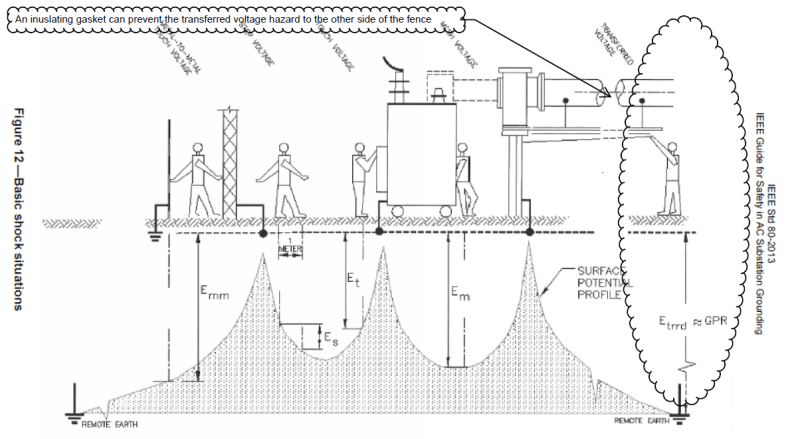Hi,
There are two separate facilities with separate owners/operators and separate power systems, hence separate earthing which are not connected to each other.
There are metallic pipes running between the two facilities (say one side is the buyer and the other side is the supplier) where the pipe support and structures are bonded to earthing at both sides.
With this scenario the two earthing are practically connected via the steel structure and the pipes.
Are there any issues with this arrangement?
The challenge is that if there is a potential difference between the two earthing (e.g. due to a fault at one side) then the piping and structures will carry potentially huge currents. It can cause other hazards too.
Connecting the two earth systems via a cable or earthing conductor is not an option.
An option would be an insulating gasket (flange) be used for piping and the pipe support shall have some insulating pads to isolate them from the piping. Now the pipes at two sides are isolated. The pipe supports can be individually connected to the earthing, so the bonding is observed at both sides of the pipe. This way the two earthing system remain isolated - well, not directly connected via a metallic conductor.
the challenge would be more for installation in Hazardous Areas.
What are your thoughts?
There are two separate facilities with separate owners/operators and separate power systems, hence separate earthing which are not connected to each other.
There are metallic pipes running between the two facilities (say one side is the buyer and the other side is the supplier) where the pipe support and structures are bonded to earthing at both sides.
With this scenario the two earthing are practically connected via the steel structure and the pipes.
Are there any issues with this arrangement?
The challenge is that if there is a potential difference between the two earthing (e.g. due to a fault at one side) then the piping and structures will carry potentially huge currents. It can cause other hazards too.
Connecting the two earth systems via a cable or earthing conductor is not an option.
An option would be an insulating gasket (flange) be used for piping and the pipe support shall have some insulating pads to isolate them from the piping. Now the pipes at two sides are isolated. The pipe supports can be individually connected to the earthing, so the bonding is observed at both sides of the pipe. This way the two earthing system remain isolated - well, not directly connected via a metallic conductor.
the challenge would be more for installation in Hazardous Areas.
What are your thoughts?

